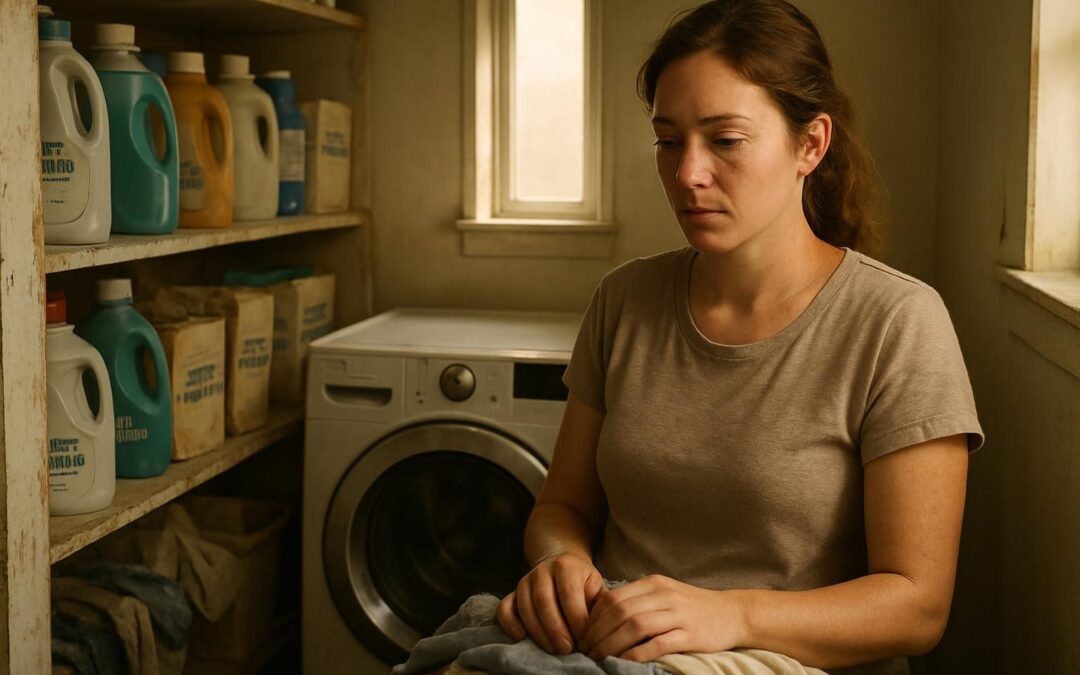Laundry day can feel like a guessing game. Many parents and homeowners get stuck staring at shelves filled with liquid laundry detergent, powder detergent, pods, and even laundry detergent sheets.
Is it better to stick with the classic washing powder or try the latest house cleaning agent everyone seems to love? The endless choices leave many searching for that perfect fresh linen scent while making sure their clothes stay soft and free from stains.
Scientists say not all laundry detergents work the same way. Some use anionic surfactants, water softeners, or enzymes like bacterial enzymes to help fight grease and dirt. Others promise reduced energy consumption or come in sustainable packaging for folks who care about pollution prevention.
This guide helps sort through household detergents by showing which ones are gentle on sensitive skin, great at stain removal, or best if you want your towels smelling like a meadow after rain.
Read customer reviews of top brands such as Tide Ultra Oxi Powder Laundry Detergent or find out if Dirty Labs Free & Clear Bio fits your lifestyle needs. Ready to tackle your next load smarter? Keep reading good things await below!
Key Takeaways
- Laundry detergents come in various forms: liquid, powder, pods, and sheets. Each has unique benefits for different stains and washing conditions.
- Sensitive skin requires special detergents. Options like Tide Free & Gentle Liquid are free from dyes and fragrances, making them safe for allergy-prone individuals.
- Eco-friendly laundry detergents like Dirty Labs Bio Enzyme Free & Clear provide effective cleaning without harmful chemicals. They use recyclable packaging to reduce waste.
- High-Efficiency (HE) washers need specific detergents that produce fewer suds to prevent machine problems. Brands like Tide Ultra Oxi Powder are designed for these machines.
- Price per load varies by product type and brand. Concentrated formulas may offer more washes per bottle or box, potentially saving money in the long run.
Comparison of Laundry Detergents
| Type | Key Benefits | Best For | Packaging | Notes |
|---|---|---|---|---|
| Liquid Detergent | Excellent on grease; dissolves well | Cold washes, fresh scent lovers | Usually plastic, may be recycled | Often available with fresh linen scent and subscribe & save options |
| Powder Detergent | Great on dirt and mud stains | Economical cleaning | Flexible packaging, can be recycled | May sometimes leave residues in cold water |
| Pods | Pre-measured convenience | Quick, easy doses | Recyclable materials sometimes | Contains PVA/PVOH; keep away from children |
| Laundry Detergent Sheets | Plastic-free, sustainable option | Eco-friendly users | Sustainable packaging | May have lower cleaning performance compared to liquids or powders |
Understanding Laundry Detergents
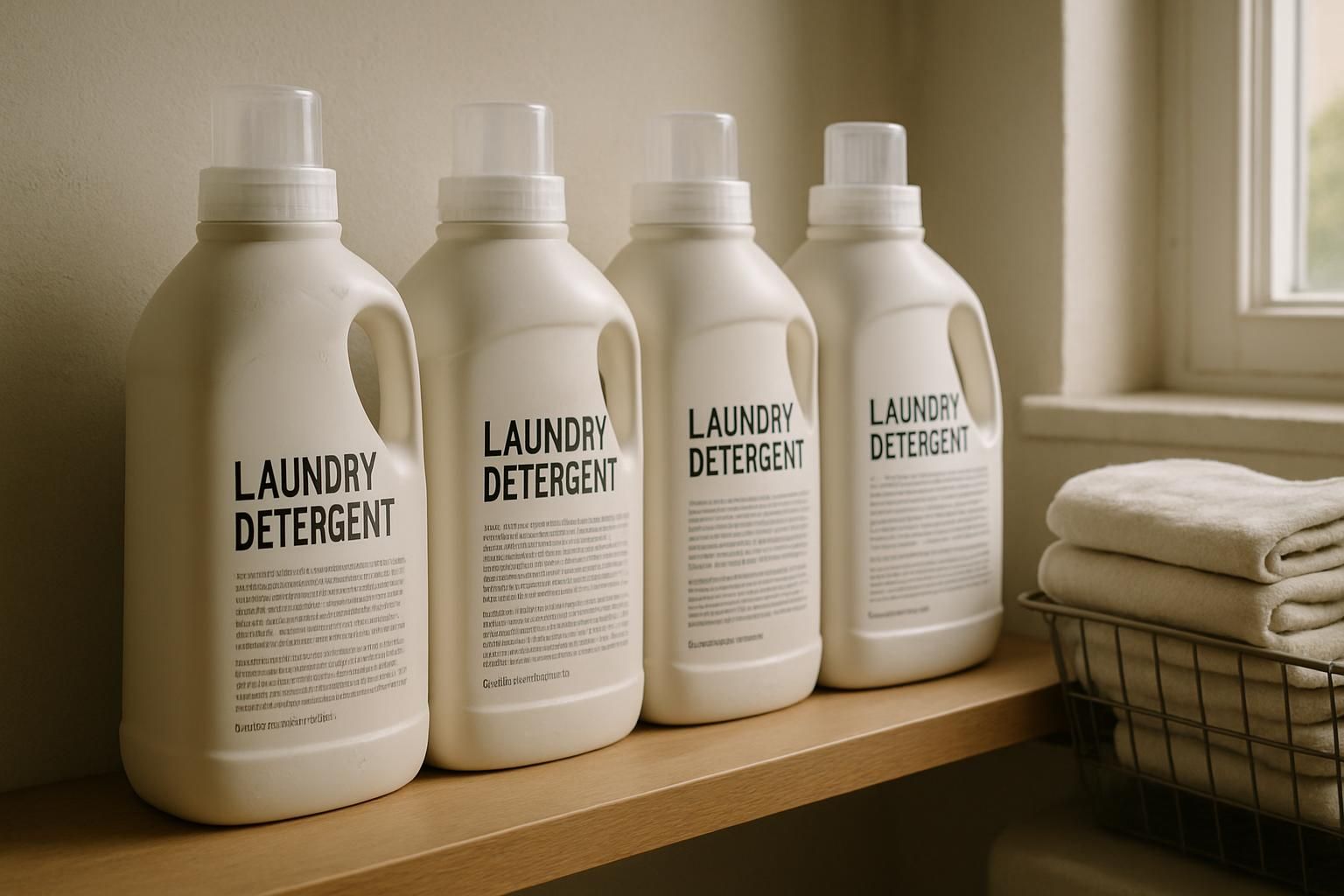
Laundry soap does more than just clean clothes; it breaks up grease, stains, and dirt using things like surfactants and washing soda.
Some detergents use ion exchange and silicates to boost cleaning power.
What is laundry detergent?
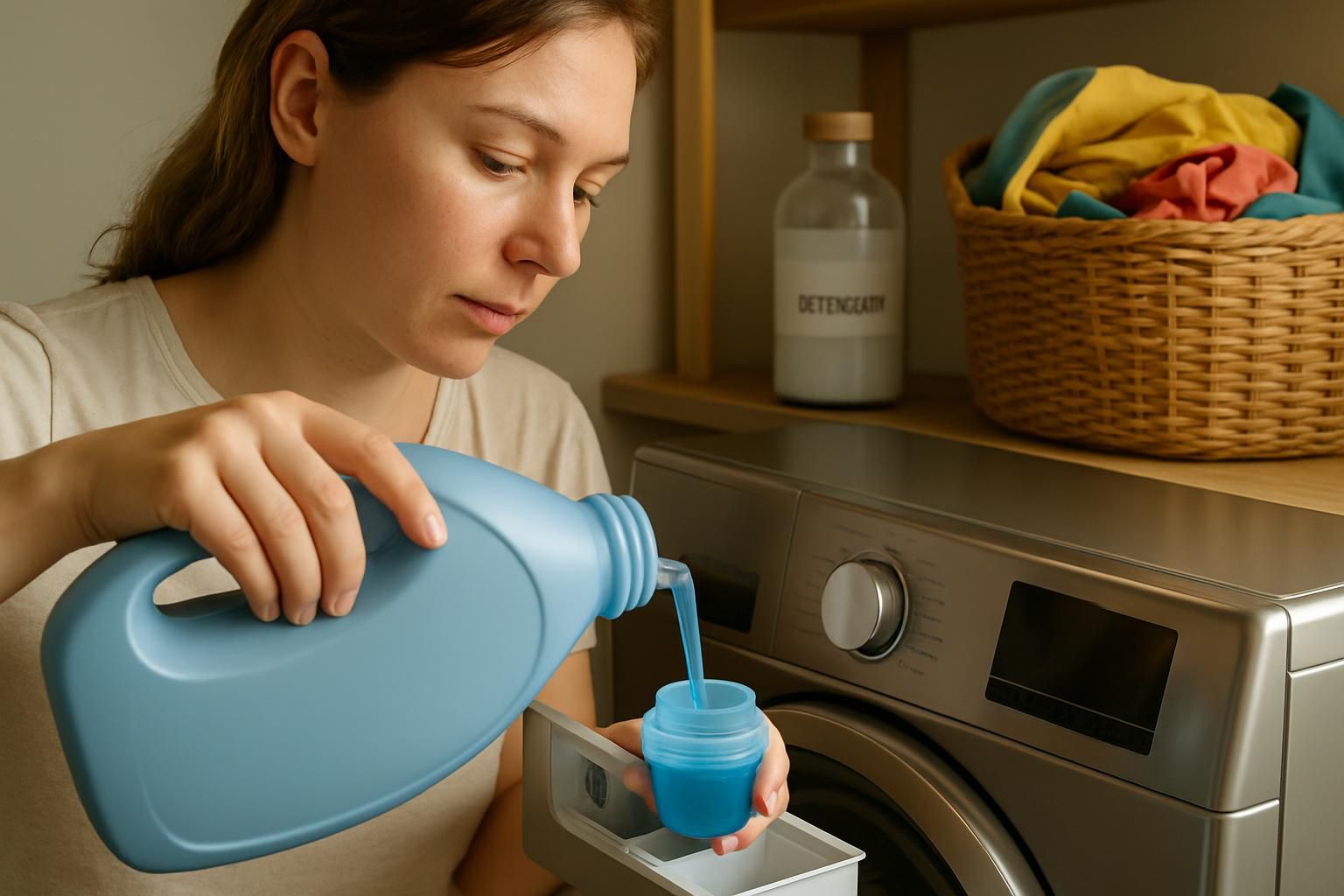
Soap’s cousin, laundry detergent, packs a punch with surfactants like non-ionic or anionic detergents that target grease and grime on clothes. It often includes enzymes such as protease or amylase to break down stains from chocolate or flour.
Sodium percarbonate and hydrogen peroxide help lift out tough odors. Optical brighteners can make white t-shirts pop under sunlight. Families using washing machines with hard water notice better results because of built-in water softeners and chelation agents like polyacrylic acid.
Many liquid detergents feature fresh linen scent, though some parents choose fragrance-free types for sensitive skin. Some brands use concentrated laundry detergent formulas which reduce packaging waste and save storage space in the laundry collection area.
Products labeled HE, or high-efficiency, create less suds for newer washers while cutting energy consumption by saving water. Labels sometimes list tricky ingredients like 1,4-Dioxane or phthalates; those can worry families who care about health risks.
EPA Safer Choice certifications flag safer picks for households juggling kids’ muddy pants and busy schedules alike.
Types of laundry detergents: liquid, powder, pods, and sheets
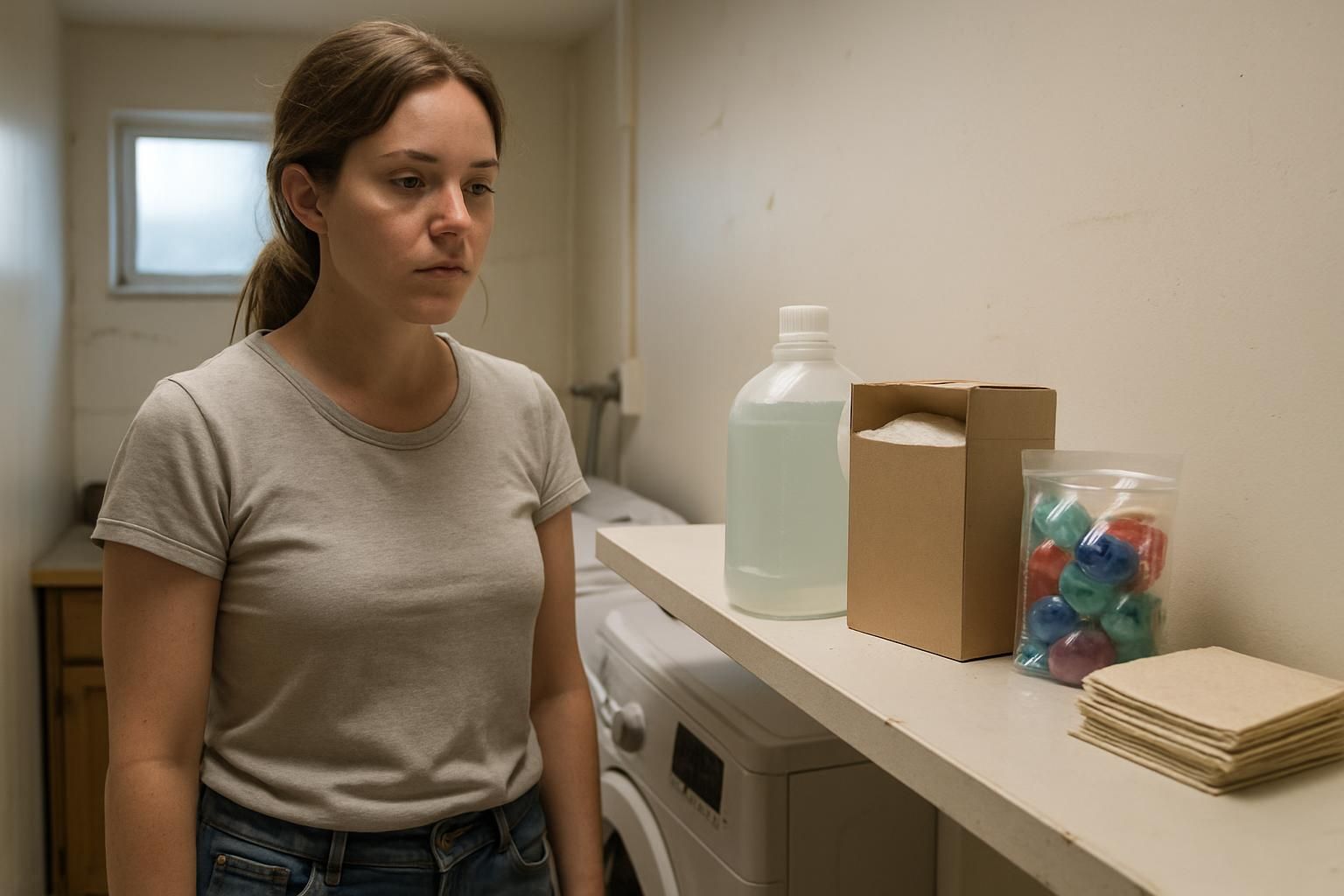
Transitioning from elementary knowledge of laundry detergent, let’s delve into the different kinds available. Each one provides unique benefits for tackling dirty laundry.
- Liquid detergents are a common selection for many. They prove effective against oil and grease stains. Their usage can be modified according to the load size, making it a versatile choice. These detergents are ideal for cold washes as they blend well at lower temperatures.
- Powder detergents excel when dealing with dirt and mud stains. They’re typically less expensive than their liquid alternatives, providing an economical cleaning solution. However, their complete dissolution in cold water might be an issue, posing the risk of leaving white residues on your clothes.
- Pods provide an uncomplicated solution with pre-measured detergent for each wash cycle. They’re extremely convenient but bear a higher cost. Due to safety reasons, they should be kept away from children. Their PVA/PVOH film raises questions about environmental compatibility.
- Sheets are emerging as a plastic-free choice interesting to those searching for sustainable products for their laundry collection. Although marketed as eco-friendly, they often contain PVA/PVOH like pods and may not offer cleaning performance on par with liquids and powders.
Each variety holds its significance in the diverse cleaning products available, from concentrated solutions that fight stains effectively to environmentally sensitive options that limit waste.
Key Factors to Consider When Choosing a Laundry Detergent
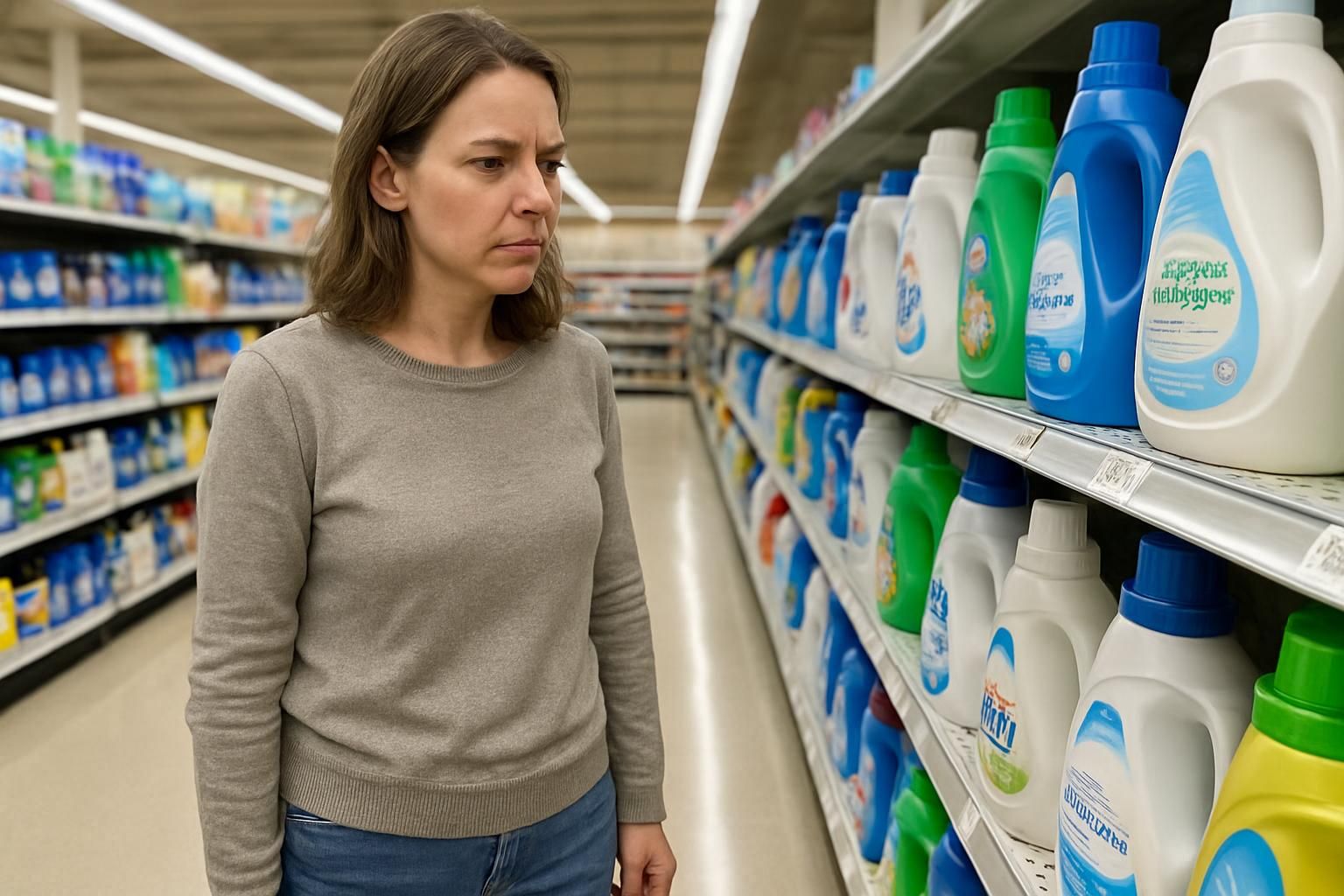
Picking laundry detergent is more than grabbing the flashiest box or liquid bottle. Some brands mix nonionic surfactants, bleach activators, and sodium carbonate for power against stains but may affect sensitive skin or energy use.
Skin sensitivity and allergies
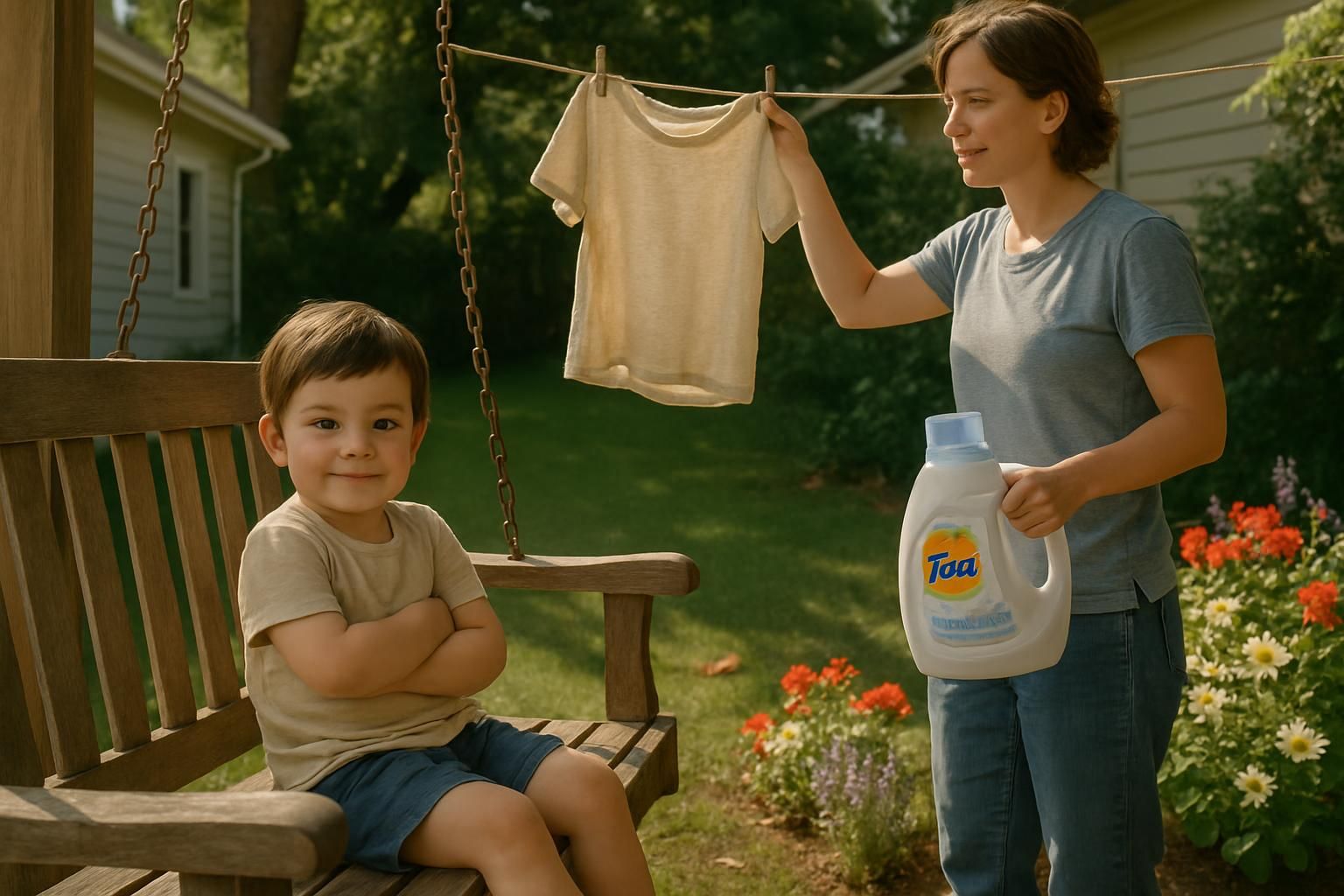
Detergent allergies often show up as hives or red, itchy patches called dermatitis. Fragrance, methylisothiazolinone/methylchloroisothiazolinone (MI/MCI), and common surfactants in synthetic detergents are top offenders.
High-efficiency liquid laundry detergent can sometimes leave more residue, which may bother sensitive skin even more.
Households with sensitive members should grab dye- and fragrance-free options like Tide Free & Gentle Liquid Laundry Detergent. This product holds EPA Safer Choice certification, making it a trusted pick among parents worried about young kids’ delicate skin.
Molly’s Suds Unscented Powder is another favorite for those dodging scents; 396 reviewers gave it an average score of 4.8 out of 5 stars. Using less concentrated laundry detergent and running an extra rinse cycle helps clear away potential irritants from clothing fibers.
Products certified by the National Psoriasis Foundation or the National Eczema Association also offer peace of mind for families who want to avoid flare-ups on laundry day.
Stain removal efficiency
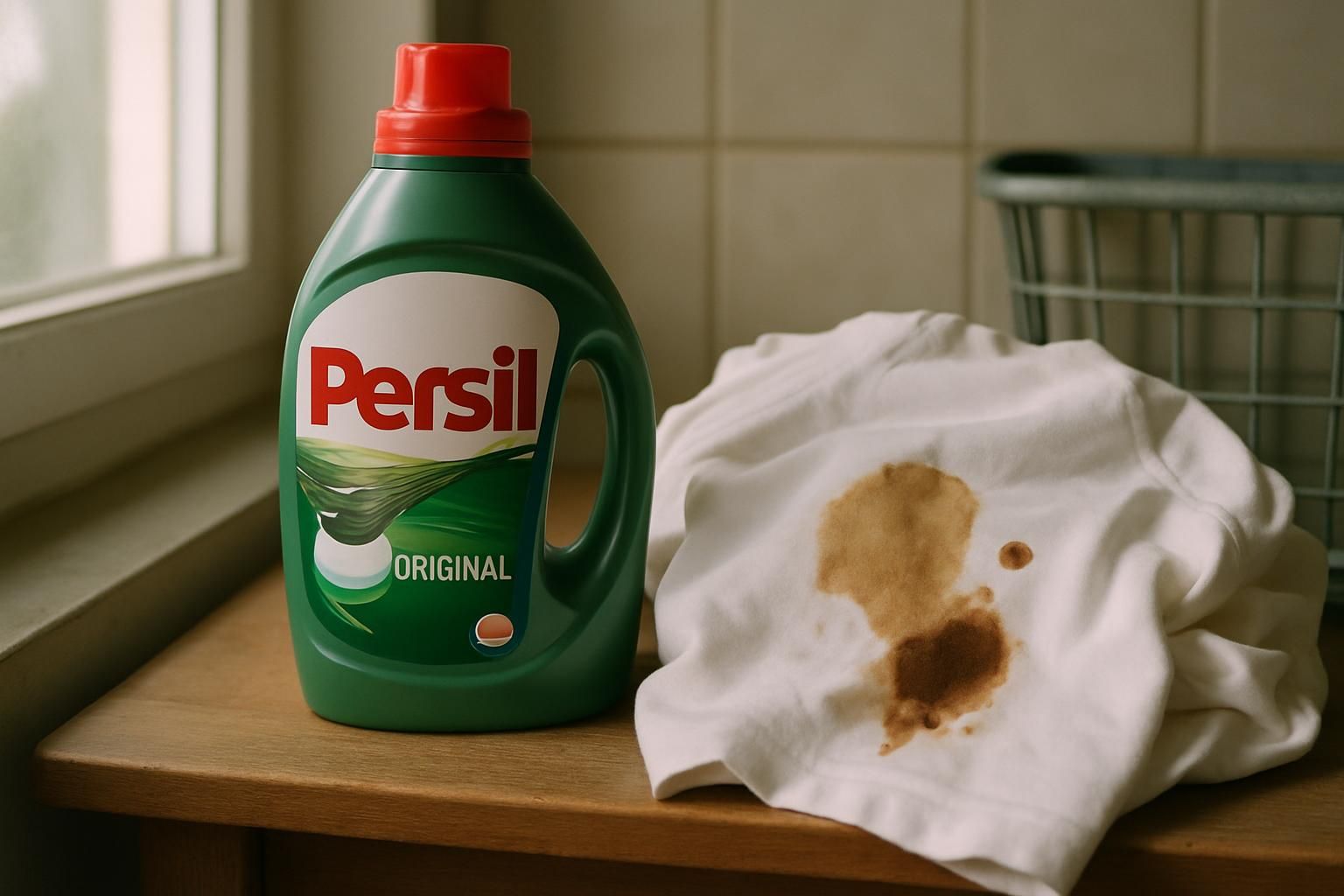
Over 35 laundry detergent brands went head-to-head on tough stains like wine, cocoa, blood, and sebum. Tide Ultra Oxi Powder Laundry Detergent won gold medals for removing stubborn blood, grass, dirt, turmeric spice stains, and even dried sebum from fabric.
Grease proved to be a challenge even for this powder detergent. ASTM International guidelines set the rules for these tests using real-world stain villains like engine oil and peat.
Pods such as Tide Pods Free & Gentle look handy but struggle with heavy-duty messes; plus they cannot treat a spot before you wash it. Liquids win here Persil Original stands out at wiping away tea and chocolate spills but packs a punchy fragrance that lingers on clothes.
Top liquid picks can save money too: just $0.25 per load to knock out everyday grime while keeping your fresh linen scent alive in your laundry collection.
Scented vs. unscented options
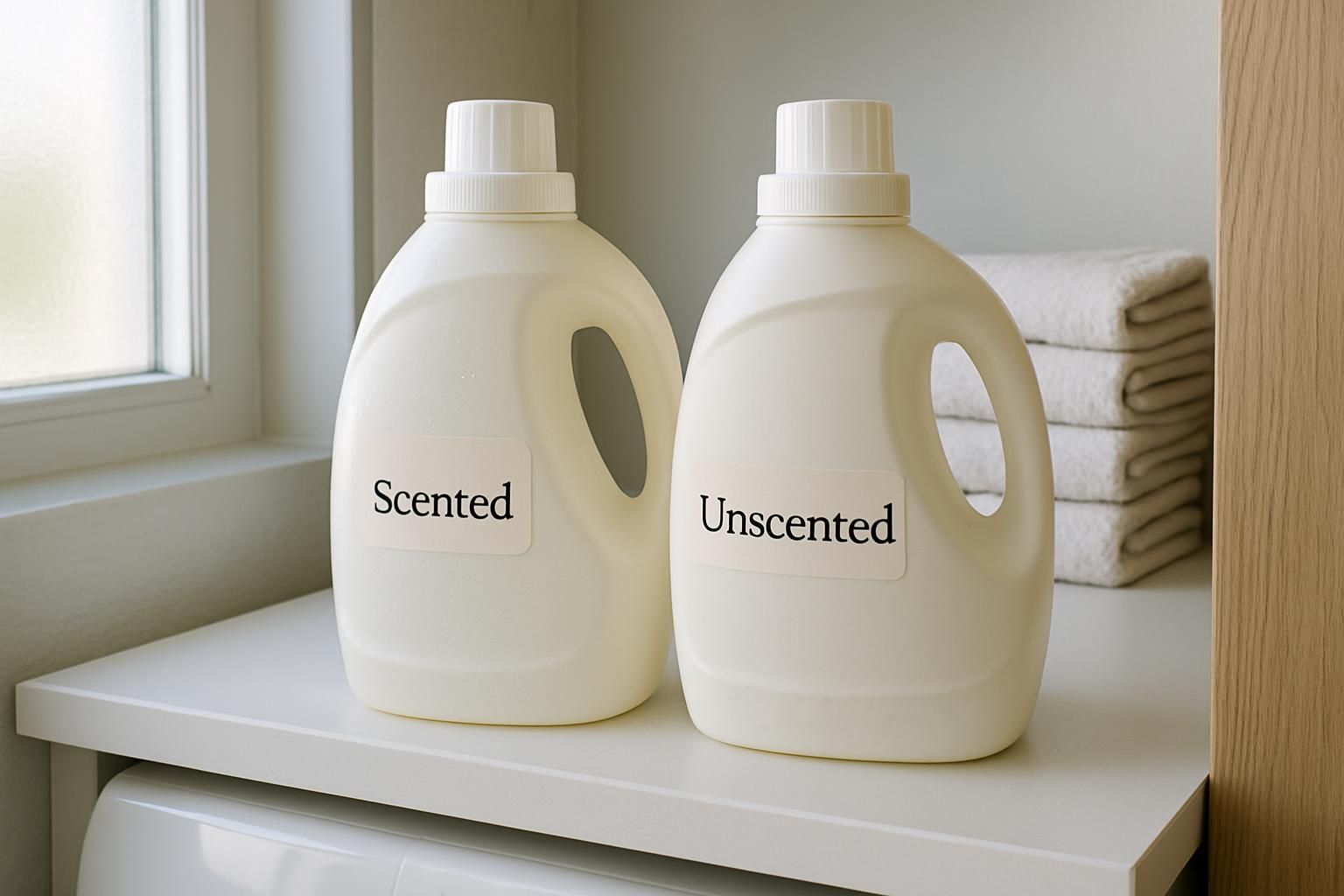
Many parents pick unscented laundry detergent to help sensitive skin. Options like Tide Free & Gentle Liquid and Dirty Labs Bio Enzyme Free & Clear stay fragrance-free.
These options earn high marks from testers looking for gentle cleaning without strong smells.
Some families love a fresh scent on their clothes. Gain Liquid (Moonlight Breeze) is popular, scoring 4.8 out of 5 stars from over 3,400 users who enjoy the boost of fragrance after every wash but report it does not always tackle stains as well as others.
Rustic Strength gives shoppers control by offering both custom-scented and unscented choices starting at $32 per jug along with stellar ratings based on more than 1,500 reviews.
Eco-friendliness and sustainability
Dirty Labs Bio Enzyme Free & Clear stands out with EWG and EPA Safer Choice certifications. This liquid laundry detergent comes in recyclable aluminum packaging. It earns the Leaping Bunny certification, which means no animal testing at any stage.
The American Cleaning Institute recommends washing clothes in cold water and hang-drying for energy savings. These habits can help reduce energy consumption while keeping your laundry collection fresh.
Beware of labels that make big green promises on laundry detergents. No strict industry standards exist for eco-friendly claims, so some products labeled eco-friendly perform poorly in stain removal or use artificial scents.
For example, 9 Elements failed cleaning tests despite a natural image. Dirty Labs Bio Enzyme costs $0.47 per load for an 8.6-ounce bottle or $0.33 per load when buying a larger size (21.6 ounces).
Top-rated plant-based sheets and pods like Clean People, Earth Breeze, and Tru Earth look cute but lag behind traditional options in effectiveness according to recent test results.
Now let’s go over which HE washers work best with these different types of detergent options.
Compatibility with HE washers
HE washers need laundry detergent that produces fewer bubbles and works well with less water.
Regular detergents create too many suds in these machines, leading to clogs or leftover gunk on freshly washed clothes.
The EPA Safer Choice program reviews formulas for both safety and effectiveness in HE models, helping parents pick the right product. Detergent pods labeled HE keep dirt suspended using chelating agents so grime doesn’t sneak back onto fabric during the rinse cycle.
Some popular options contain enzymes that boost cleaning but stay low-foam; avoid over-sudsing picks like Tide Purclean if you crave a smooth-running machine.
Top Recommendations for the Best Laundry Detergents
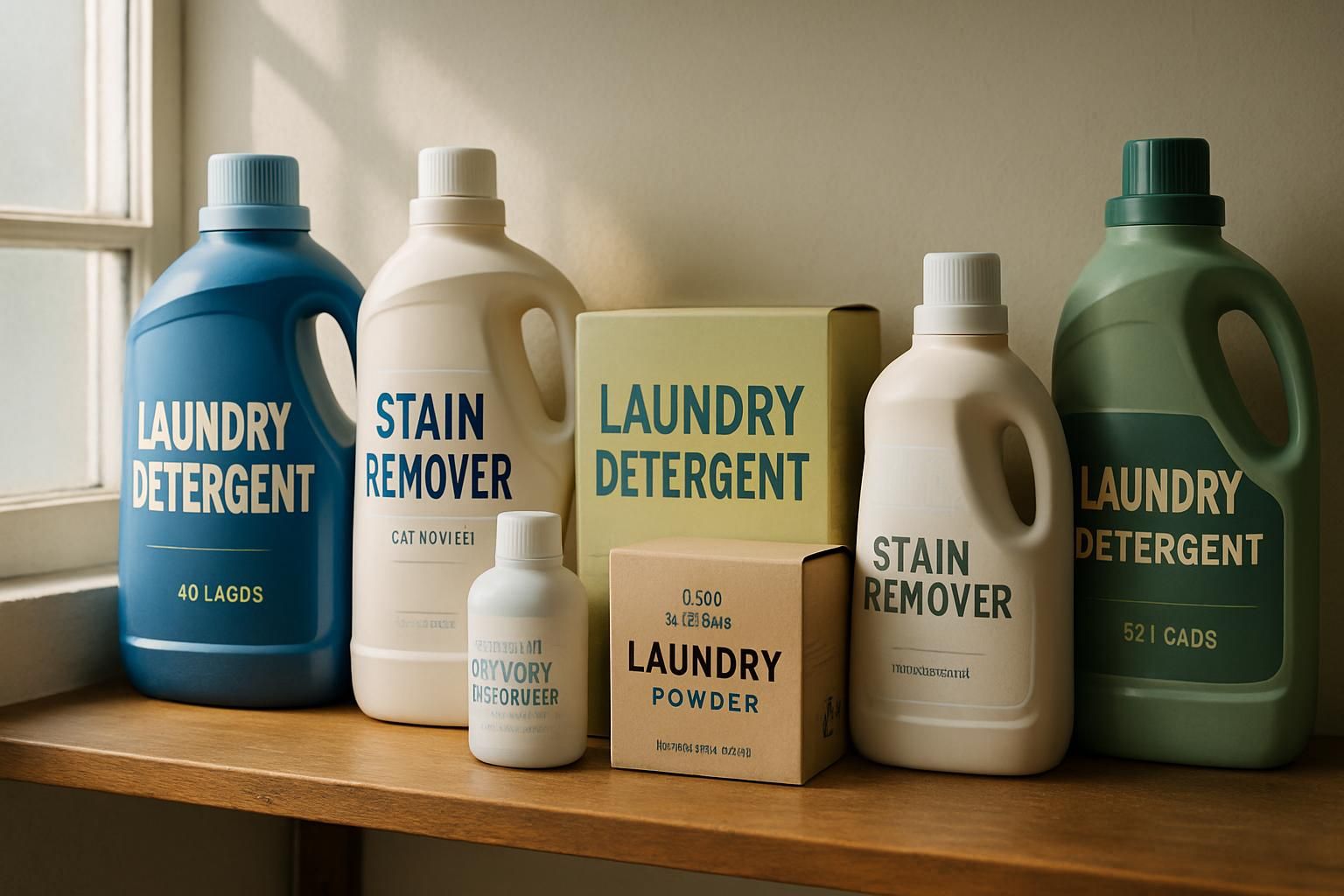
Some detergents fight stains like champions, while others cater to sensitive skin or eco-friendly homes. Curious how powder, pods, and concentrated formulas stack up? Keep reading for an easy breakdown.
Best overall: Tide Ultra Oxi Powder Laundry Detergent
Tide Ultra Oxi Powder Laundry Detergent stands out on laundry day. Parents and house owners can grab a 127 oz box for $20 at Home Depot or Target. Each scoop battles blood, grass, dirt, sebum, and turmeric stains thanks to its oxygen bleach.
Those muddy soccer uniforms do not stand a chance here.
This powder detergent costs about $0.36 per load for up to 73 loads. It dissolves fast even in cold water, leaves only a mild fresh scent behind, and barely any residue clings to your clothes or the machine drum.
While it struggles with grease-based stains like those from bacon drippings or pizza cheese spills, Tide Ultra Oxi shines against clay-streaked pants and ketchup splatters from toddlers’ shirts.
Lab tests back up these claims; experts picked it as the top powder detergent you’ll spot on store shelves today.
Best liquid detergent: Tide Free & Gentle Liquid Laundry Detergent
Parents dealing with sensitive skin know the value of a good liquid detergent. This pick skips both fragrances and dyes, making it gentle for kids and those with allergy-prone skin.
Shoppers will spot the EPA Safer Choice label plus seals from the National Psoriasis Foundation and National Eczema Association right on the jug. For $13 at Walmart (84 oz) or $20 on Amazon (132 oz), every bottle promises up to 80 washes at just $0.25 per load.
Grease stains often meet their match in this concentrated laundry detergent. It handles everything from spilled juice to muddy soccer socks without needing extra fabric softeners. The updated formula is now in testing, so watch for even better stain-fighting soon.
Busy parents can find it easily through subscribe & save options at major stores nationwide no cloak-and-dagger shopping required!
Best for tough stains: Persil Original Liquid Detergent Everyday Clean
Persil Original Liquid Detergent Everyday Clean gets shirts cleaner than most other liquid laundry detergents. Tea, cocoa, and deep-set stains surrender fast thanks to its concentrated formula.
T-shirt stains wash out in one try during independent tests. Each 82.5-ounce bottle covers up to 110 loads, making each load cost just $0.22.
Parents tackling muddy jeans or mysterious lunch spills praise Persil’s muscle against odors and messes. The fresh scent is strong, which some find refreshing while others need a warning before washing anything for sensitive skin.
Find this powerhouse on Amazon for $24 or Walmart for $20 in the bigger 150-ounce jug. Next up: discover how pods compare with liquids and powders in today’s growing laundry collection options.
Best pods: Tide Pods Free & Gentle Laundry Detergent
Tide Pods Free & Gentle Laundry Detergent offer an easy fix for busy households. Each pod packs a concentrated laundry detergent that works well in both standard and HE washers. Parents appreciate the scent-free formula, which helps families with sensitive skin skip allergic reactions.
Shoppers notice the pods are smaller than other brands and cost between $0.33 and $0.47 per load, depending on pack sizeâ$37 at Amazon or just $10 at Target means choices fit any budget.
Pods come equipped with a bittering agent to keep curious kids from biting into them, but storage needs extra caution. These pods tackle everyday laundry loads without fuss, although powders or liquids beat them out on tough stain removal.
Some users wish they could use pods for pre-treating stains but find it doesn’t do the trick there either.
Next up: Check out eco-friendly options like Dirty Labs Free & Clear Bio Laundry Detergent to help reduce waste while keeping clothes fresh.
Best eco-friendly option: Dirty Labs Free & Clear Bio Laundry Detergent
After checking out the best pods, some families want a laundry detergent that’s good for people and the planet. Dirty Labs Free & Clear Bio Laundry Detergent packs a punch with bio enzymes instead of harsh chemicals or bleach.
The EPA Safer Choice and EWG Certified seals back up its safety claims, so parents can breathe easy about their laundry collection.
This concentrated laundry detergent comes in small recyclable aluminum bottles, making it a win for eco fans tired of endless plastic jugs. Every 8.6-ounce bottle cleans 32 loads at $0.47 per load on Amazon or less when bought direct from Dirty Labs at $26 per bottle.
Bigger families might grab the 21.6-ounce option; it covers up to 80 loads at around $0.33 each time you wash your favorite blanket or those socks from under the couch.
The formula skips artificial fragrance and dyes, which helps keep sensitive skin happy after every cycle in an HE washer. Each package includes a silicone beaker for measuring out just the right amount without any fuss or waste no math degree required!
Whether tackling strong odors, dirtied sports gear, or baby clothes covered in who-knows-what, Dirty Labs relies on non-ionic surfactants plus plant-based power instead of old-school phosphates found in some powder detergents and household bleach products.
Parents get clean clothes without loading up water supplies with questionable stuff like sodium hypochlorite or other traditional builders often seen in dish soap formulas and there is no need to subscribe & save unless you really love fresh starts!
Laundry Detergents for Special Needs
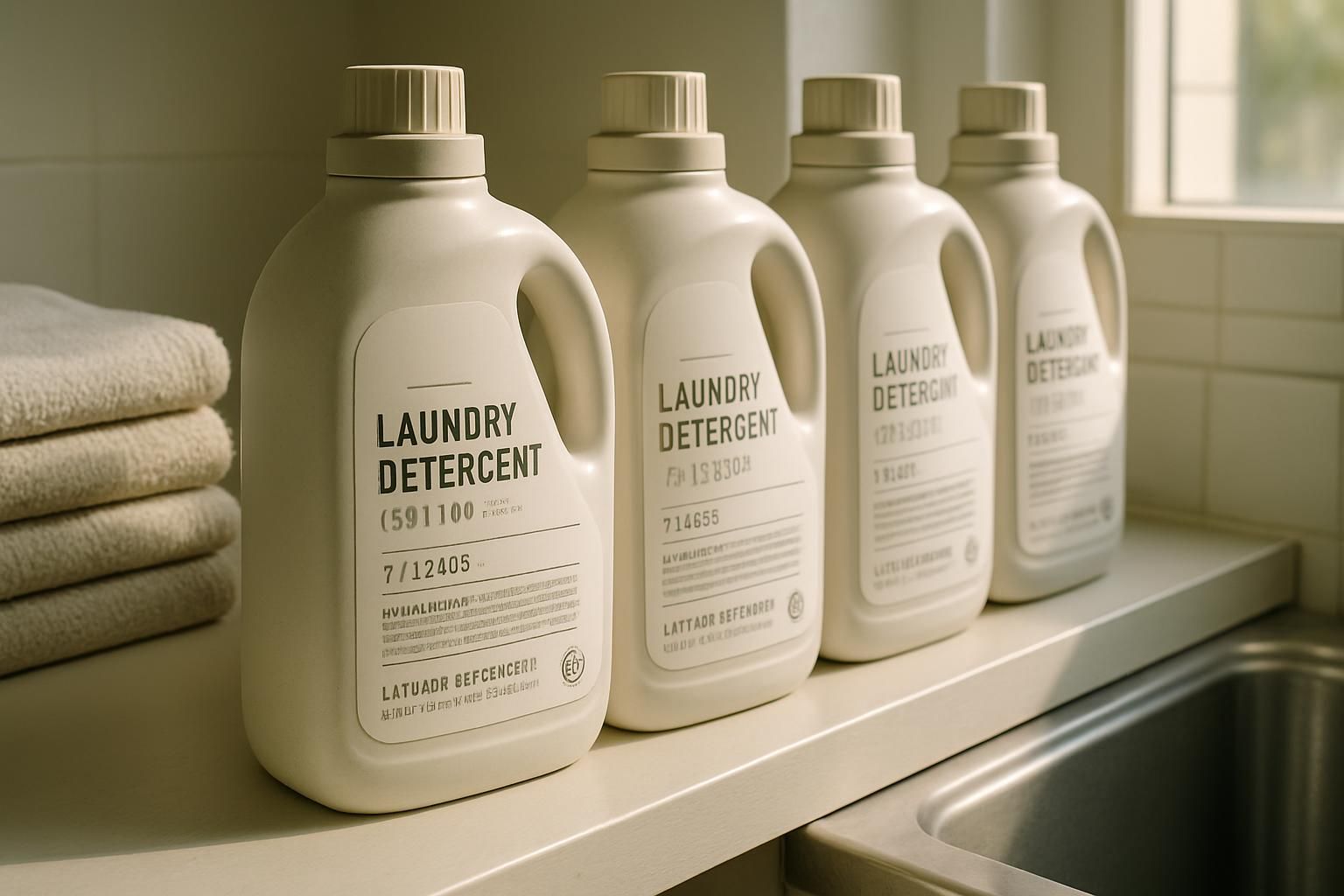
Sometimes, one-size-fits-all laundry soap just doesn’t cut it. Special needs call for specific blends think gentle formulas with fewer harsh chemicals like cationic surfactants or sodium silicate to help every family member feel comfortable in their favorite clothes.
Fragrance-free options for sensitive skin
Tide Free & Gentle Liquid stands out for those with sensitive skin or allergies. This concentrated laundry detergent skips both fragrances and dyes. It boasts seals from the EPA Safer Choice, National Psoriasis Foundation, and National Eczema Association.
Consumers can trust it loads after load, offering peace of mind while tackling stained clothes.
Dirty Labs Bio Enzyme Free & Clear ranks high with an EWG certification at 47 cents per wash. Molly’s Suds Unscented Powder delivers strong cleaning on a budget $14.99 for 70 loads and scores a whopping 4.8 out of 5 based on nearly four hundred reviews.
Seventh Generation Free & Clear Packs keep things simple; just toss one pack in without fuss over measuring powder detergent or liquid detergent amounts.
Eco-conscious households turn to companies like Ecos or Biokleen, which ditch scents and dyes altogether in their liquid laundry detergent lines while focusing on clean ingredients and sustainable packaging for their laundry collection needs.
Rustic Strength offers an affordable custom-made scentâincluding a no-scent pickâfor $8; parents rave about its gentle touch reflected across more than fifteen hundred glowing reviews online.
Baby-safe laundry detergents
Babies have sensitive skin that needs extra care. Dreft stays popular for washing baby clothes but falls short on tough stains and greasy marks.
Parents of infants with allergies often use unscented powder detergents like Molly’s Suds to avoid skin irritation from fragrance or phosphates in detergent.
Always check labels for the National Eczema Association certification. This badge means a product suits even newborn clothing and cloth diapers without leaving soap scum behind.
Most experts agree baby-specific detergent becomes necessary only if an allergy appears; otherwise, sensitive formulas work just fine on all family loads using HE washers or regular machines alike.
Plant-based and biodegradable detergents
Families choose plant-based and biodegradable laundry detergents for safer cleaning around kids and pets. Brands like Dirty Labs Bio Enzyme Free & Clear top eco-friendly lists with EWG/EPA certification, a clear nod to parents who want clean clothes without harsh chemicals.
Blueland and Dropps offer pods made from plants, though some struggled with tough stains or packaging hiccups in tests. Method and Mrs. Meyers get average reviews for their plant-powered formulas but keep things simple by skipping ingredients that often bother sensitive skin.
Earth Breeze, Tru Earth, and Clean People talk up their green credentials with plastic-free laundry detergent sheets, yet lab results show they trail behind on stain-fighting muscle.
Most of these options use concentrated laundry detergent recipes in sustainable packaging to cut waste but may miss the mark if you need heavy-duty cleaning after soccer practice or art days at home.
Products like 9 Elements and Clean Cult highlight what’s missing bleaches, surface-active agents like linear alkylbenzenesulfonates, dyes but sometimes fall flat against stubborn grease or sauce spills on T-shirts.
Parents weighing green choices find peace ditching synthetic fragrances while trading just a bit of power for planet-friendly washing.
How to Use Laundry Detergent Effectively
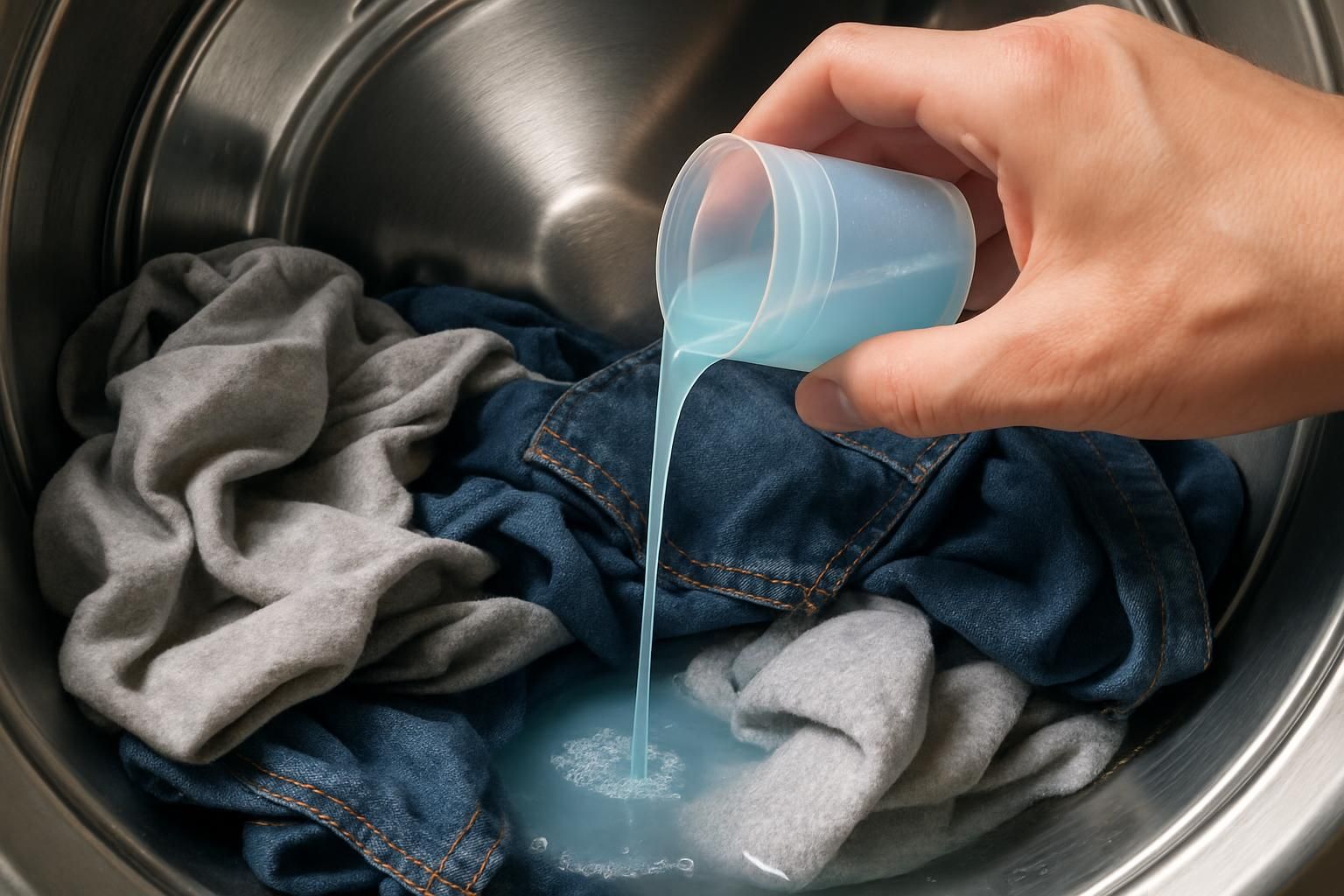
Measure your concentrated laundry detergent based on the load size and soil level. Add powder or liquid formulas directly into the drum if possible, so surfactants and chelating agents can start working on dirt right away.
Determining the right amount to use
Determining the accurate quantity of laundry detergent is crucial. Overdoing it might leave behind a residue, whereas using too little may result in inadequate cleanliness.
- Refer to the instructions on your detergent pack for the optimal dose. For instance, Persil Original Liquid suggests lesser amounts for smaller batches.
- Reflect on the volume of your laundry. A loaded machine demands more detergent relative to a half-filled one.
- Assess the level of dirt on your clothing. Items that are heavily stained need a smidge more detergent for thorough cleaning.
- If you possess sensitive skin, consider utilizing a little less detergent and incorporate an extra rinse. This method can aid in minimizing discomfort.
- For HE washing machines, employ less detergent than standard devices demand as they use less water.
- Rely on the cap or cup provided with liquid detergents like Tide Free & Gentle for measurement. This ensures you’re not dispensing too much.
- In the case of pods, like Tide Pods Free & Gentle, typically, a single pod suffices for a regular-sized load in an average water hardness scenario.
- Evaluate your water hardness. Hard water might necessitate a bit more detergent owing to minerals that could disrupt the cleaning efficiency.
- For concentrated laundry detergents like Persil Original Liquid, keep in mind that they demand lesser product per load because of their high concentration.
Following these pointers assists everyone in ensuring their clothes are clean and fresh, without wasting detergent or damaging their appliances.
Tips for pre-treating stains
Finding the right amount of laundry detergent is one step. The next is tackling those stubborn stains head-on. Smart strategies for pre-treating stains include:
- Apply liquid laundry detergent directly to the stain as soon as possible. An enzymatic liquid like Tide Free & Gentle works well for tough stains.
- Rub the fabric gently against itself or use a soft-bristled brush to work in the detergent. This action breaks up the stain.
- For grease spots, sprinkle some powder detergent onto the area. Powder detergent contains agents effective against greasy messes.
- Use cold water for blood and sweat stains. Rinse these out before applying any laundry soap.
- Oxygen bleach in powder detergents can help with turmeric or wine spills. Mix a bit with water and apply it to the stain before laundering.
- Avoid pods for pretreating as they cannot be applied directly to stains.
- Soak the fabric in a mixture of water and detergent if the stain persists. A 30-minute soak often loosens the stain.
- Inspect the area after washing but before drying. High heat from dryers can set stains permanently.
- If initial attempts do not remove the stain, repeat pre-treatment rather than drying the fabric.
Stains yield when treated with patience and proper techniques. Liquid detergents offer flexibility, while specific powders boost stain-fighting power.
Common Laundry Detergent FAQs
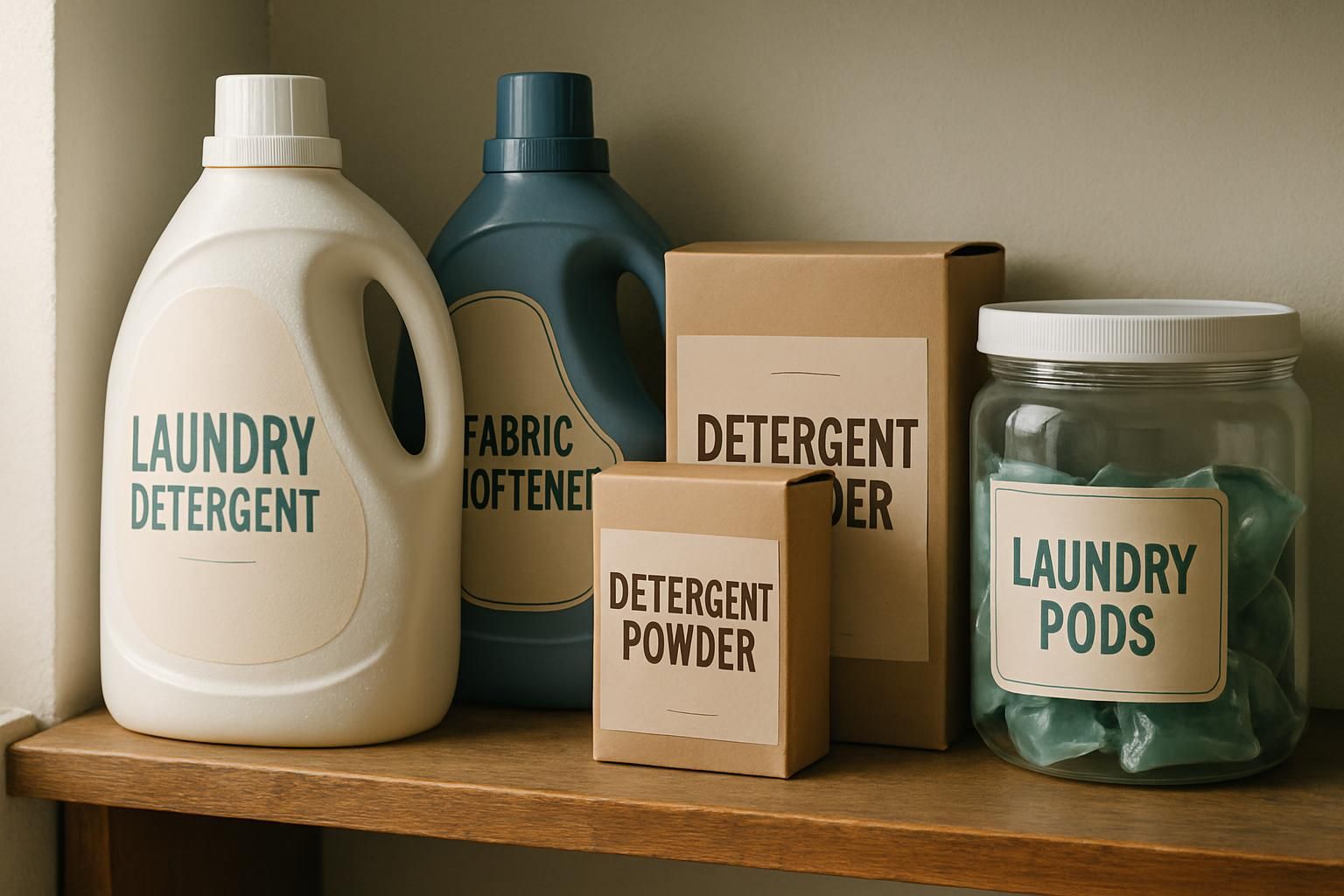
Ever stare at a detergent label like it’s written in some strange code? Readers with curious minds can dig deeper into laundry chemistry and product choices through our extra guides.
What is the difference between HE and regular detergents?
HE detergents work in high-efficiency washers by creating less foam and using less water. Their concentrated formulas help keep dirt suspended so it does not settle back onto clothes.
Regular detergents create more suds and leave residue if used in HE machines. That can lead to extra rinse cycles or even a mess on your laundry room floor.
EPA Safer Choice reviews have found many top options like Tide Ultra Oxi Powder Laundry Detergent perform well with both front loaders and traditional machines. Most major brands now sell HE-compatible powders, liquid laundry detergent, pods, and sheets for different needs.
Using the right formula helps get stains out while protecting your investment in a fancy washing machine.
Can laundry detergent impact allergies or skin conditions?
HE and regular laundry detergents have different uses but both can affect sensitive skin. Some detergents spark allergic reactions like hives, dermatitis, or red bumps, especially in babies and adults with allergies.
Fragrances, surfactants such as alkylbenzene sulfonates or zwitterionic surfactants, and certain preservatives like MI/MCI often trigger irritation.
Switching to fragrance-free options can help. Tide Free & Gentle Liquid Laundry Detergent is a favorite for those wishing to avoid dyes and harsh chemicals. Molly’s Suds Unscented Powder minimizes common irritants found in traditional powders.
Parents sometimes choose baby-safe liquid laundry detergent; experts say it is necessary only if allergies appear. Look for certifications from groups like the National Eczema Association or National Psoriasis Foundation for added assurance.
Dirty Labs Bio Enzyme Free & Clear adheres to both EWG and EPA standards, keeping sodium perborate and sulfates away from delicate skin. Using less detergent plus an extra rinse cycle can help remove any leftover residue causing issues in laundry collection.
Are DIY detergents a good alternative?
DIY laundry detergents seem tempting, but most lack important cleaning agents like surfactants and enzymes. These missing ingredients make removing tough stains or grease more challenging than using a liquid detergent crafted by brands like Tide or Persil.
Homemade formulas can cause soap buildup, which clings to fabric and may clog machines. This buildup leaves residue that neither powder detergent nor hot water can easily rinse out, forcing additional washes.
Commercial products go through strict safety checks using EPA Safer Choice and EWG standards, while DIY recipes skip these steps. Experts at top cleaning institutes advise against homemade blends due to their difficulty in handling minerals and their tendency to leave clothes less fresh.
Most DIY mixes also fail to dissolve fully; leftover soap collects dirt instead of releasing it into the wash, so users may end up re-washing garments.
Conclusion
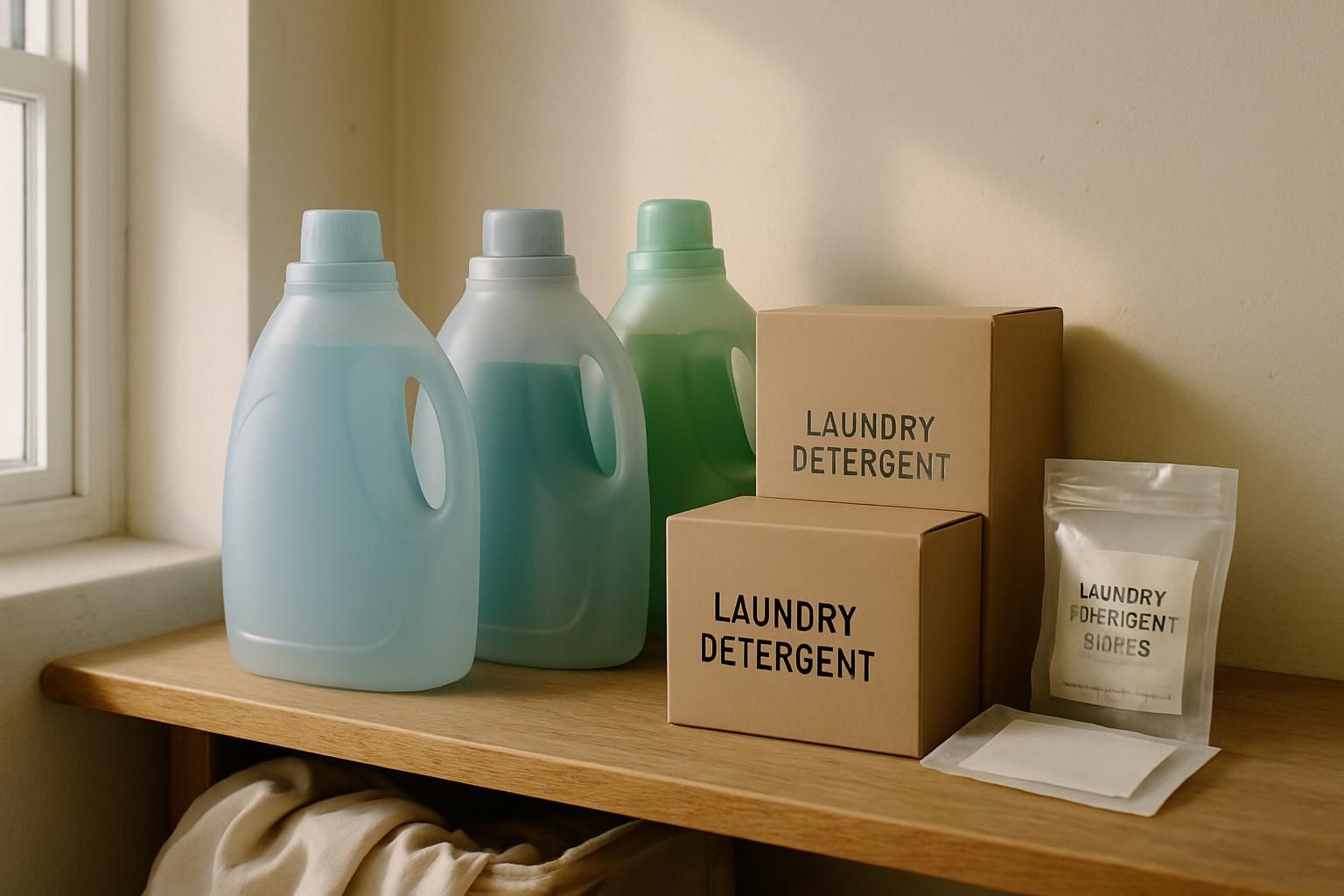
Washing clothes shouldn’t feel like rocket science. Great detergent cuts through greases and stains while leaving behind a fresh linen scent. With so many options like liquid detergents, powder detergents, and laundry detergent sheets, there is something for every family and budget.
Pick what matches your needs be it for sensitive skin or sustainable packaging and take advantage of those subscribe & save deals. Keep the laundry routine smart and simple; clean never goes out of style.
Recommended Cleaning Services
Keeping your laundry fresh is only one part of maintaining a truly clean home. If you’d like to save time and enjoy professional-level results, My Cleaning Angel offers a full range of residential and specialty cleaning services designed to keep every part of your home spotless and stress-free:
-
House Cleaning Services – Ideal for weekly, bi-weekly, or monthly home cleaning to maintain a consistently fresh and healthy living space.
-
Deep Cleaning Services – A more detailed top-to-bottom clean that tackles built-up dirt, grime, and hard-to-reach areas.
-
Move-In Cleaning Services – Make your new home feel truly move-in ready with a thorough, professional clean.
-
Move-Out Cleaning Services – Leave your old space spotless and avoid unnecessary cleaning fees or deposit deductions.
-
Post-Construction Cleaning – Safely remove dust, debris, and residue after remodeling or renovation projects.
-
Vacation Rental Cleaning – Keep your Airbnb or short-term rental guest-ready with reliable turnover cleaning and fresh linens.
Ready for a Cleaner, Healthier Home?
Keeping your laundry fresh is easier when your entire home is professionally cleaned and cared for. Let My Cleaning Angel take care of the hard work so you can enjoy more free time and a consistently spotless space.
From routine house cleaning to deep cleaning, move-in/move-out cleaning, post-construction cleanup, and vacation rental turnovers, our trained professionals deliver reliable, detail-oriented results every visit.
👉 Book your cleaning today and experience the My Cleaning Angel difference.

